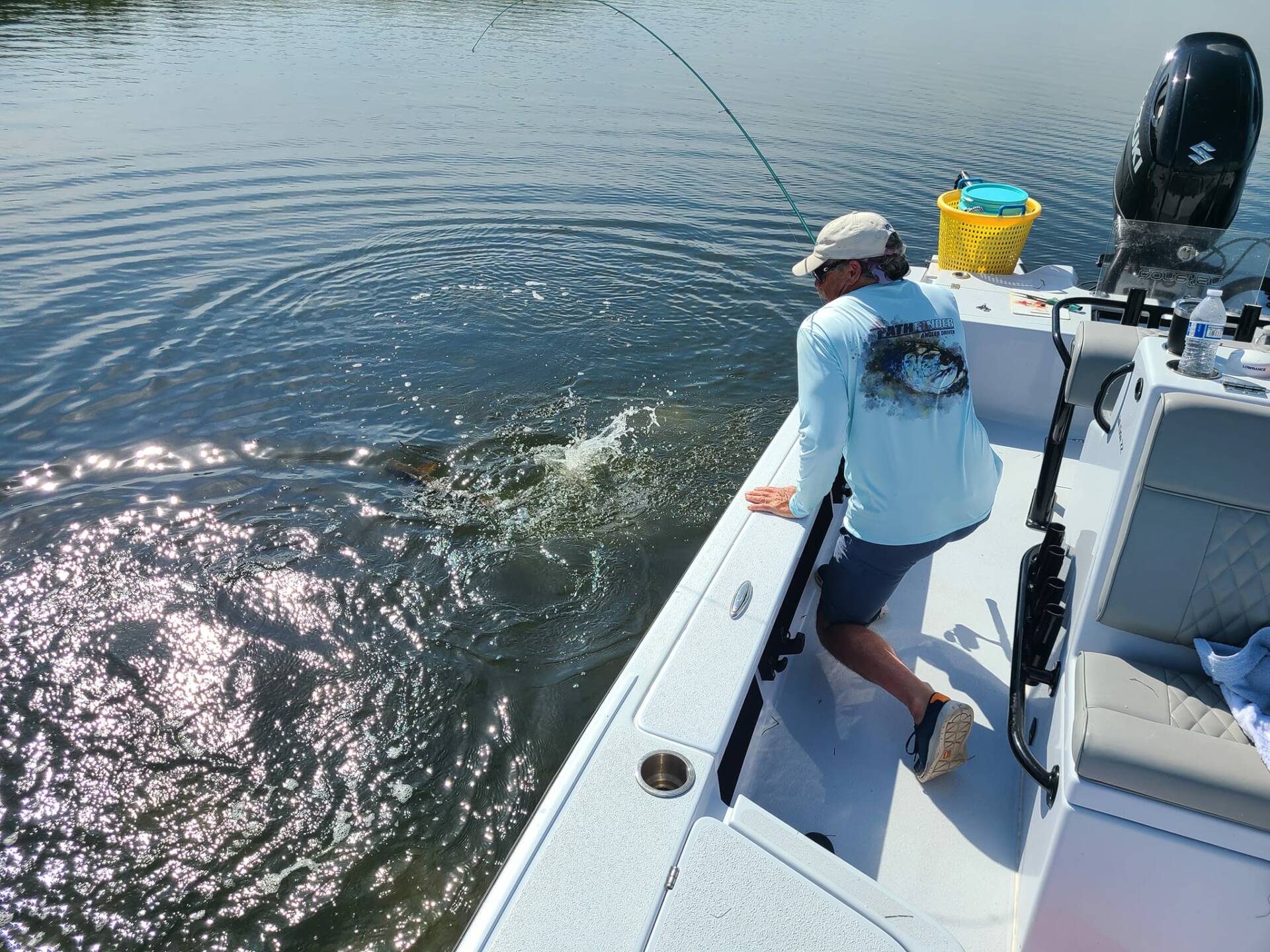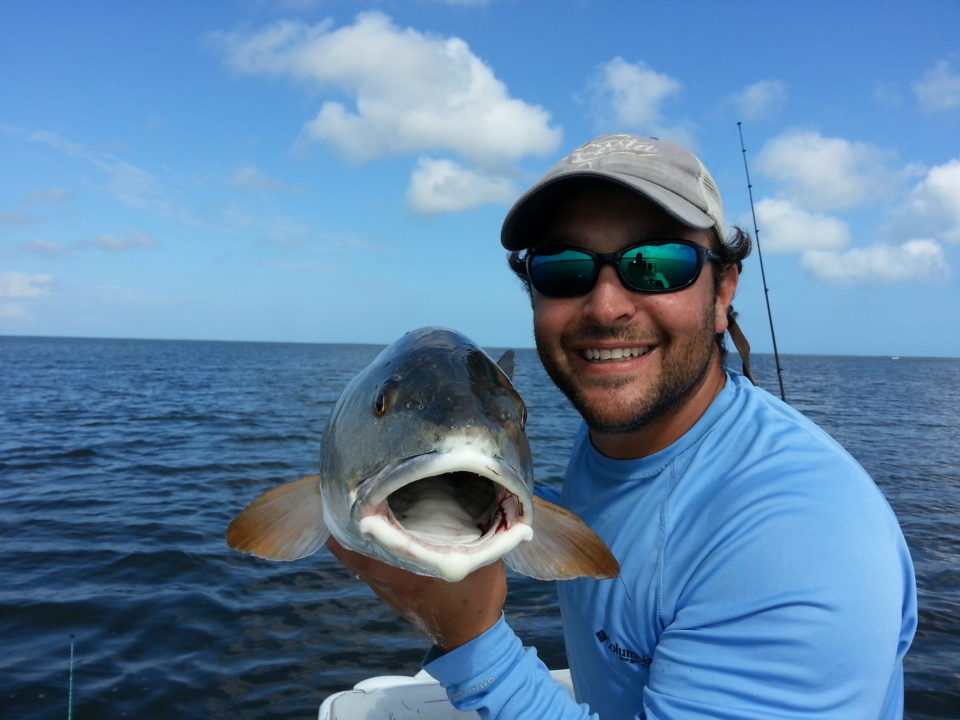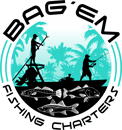Last Updated on July 31, 2024 by Eric
Florida’s always buzzing for anyone who loves to fish, and Tampa? Well, it’s right at the heart of some of the best spots you’ll find. Around here, you’ve got all kinds of options: quiet backwaters, busy piers, and the open waters of the Gulf.
You’ve also got your choice of fishing types—be it tossing your line off the Skyway Fishing Pier, heading out into the Gulf for some deep-sea action, or sticking to the calmer waters near the mangroves and grass flats like we see around Weedon Island and up by Old Tampa Bay.
Now Tampa Bay is the largest open-water estuary this side of the state, stretching all the way from the ports by Downtown Tampa to the quieter waters by Apollo Beach. It’s a real mix here—with everything from mangrove shorelines where snook like to hide, to the grass flats where you’ll find redfish cruising in the shallows.
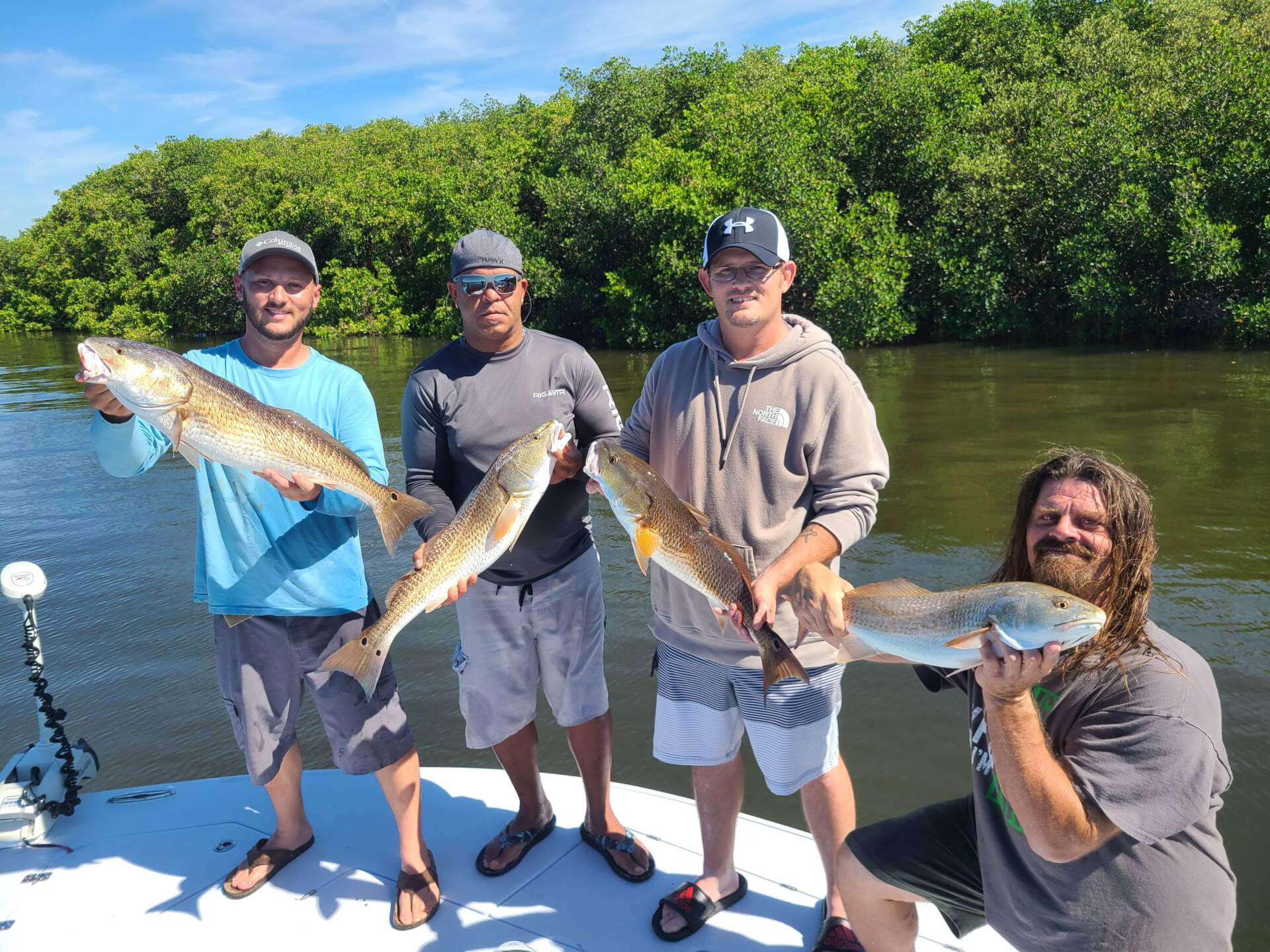
And every once in a while, you might even tangle with a tarpon, those giants we locally crown as the “Silver King” because of their sheer might and fight.
In Tampa the fishing’s versatile as heck. Doesn’t matter if you’re all about live or frozen bait or want to try your luck with artificial lures. There’s no right or wrong way to fish here—it all depends on what you’re after and how you like to fish.
What Fish Can You Catch Around Tampa?
If we’re talking even just Tampa Bay, you could write a whole book on the different kinds of fish you can hook, but let’s focus on the heavy hitters, the ones that get local anglers fired up.
But first, let’s get the lay of the land—or, better, the water…
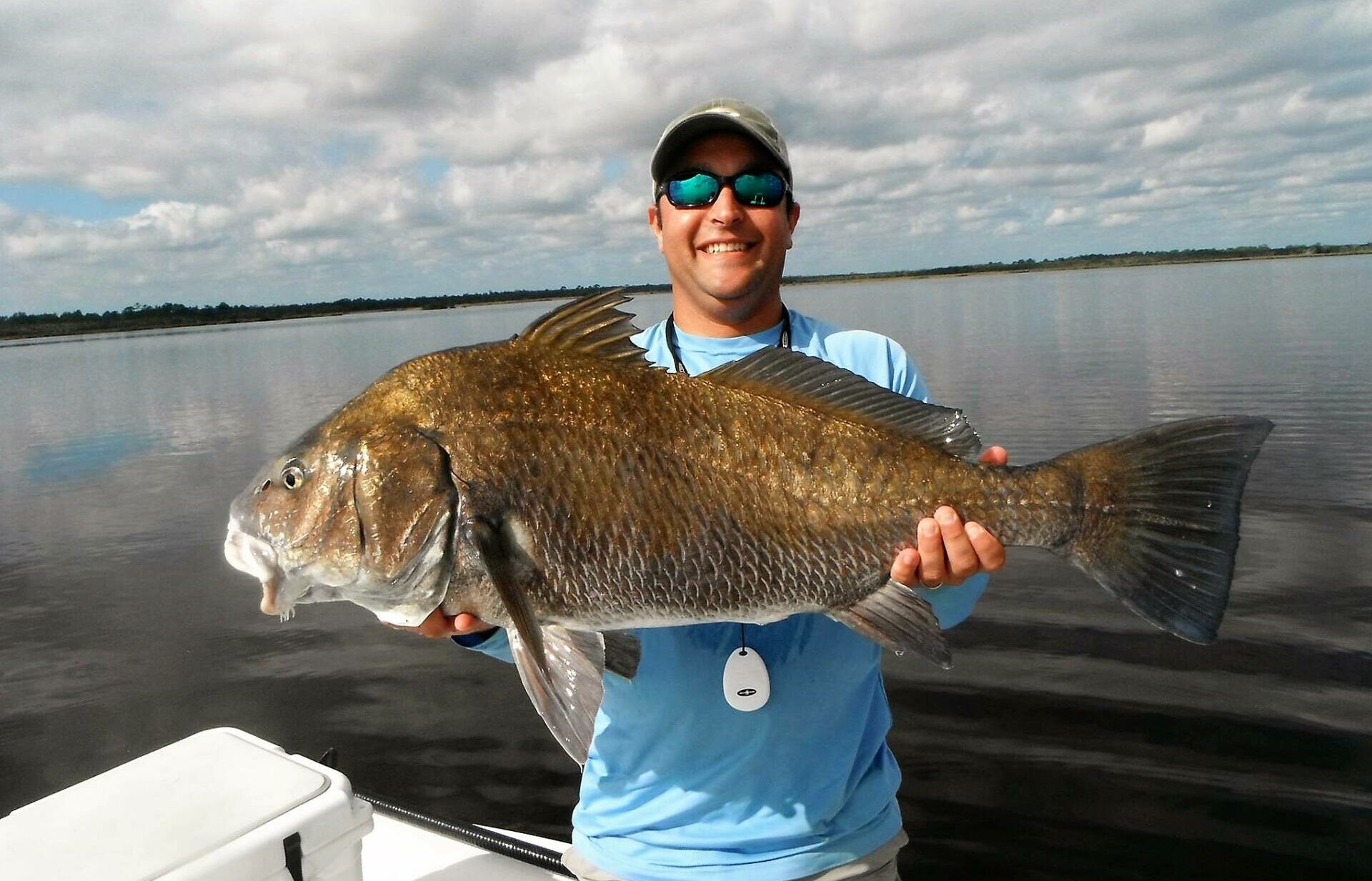
Tampa Bay is the heart of inshore fishing in Tampa, Florida—which itself is known as a fishing capital. We’ve got over 200 types of fish calling it home or just cruising through it.
Now, when these fish cruise through The Bay, they’re usually following migration patterns or chasing bait schools:
- Take tarpon. They start showing up when the waters warm up around late spring, following the baitfish that swarm our waters as temperatures rise. They’re mostly heading north, coming in from the south through the deeper channels like the shipping channel that cuts right through the middle of the Bay from the Gulf.
- You’ve also got species like kingfish and Spanish mackerel that migrate along the west coast of Florida. They come in close to the beaches and the mouth of the bay—places like the waters around Egmont Key are hotspots during migration seasons in spring and fall. They’re chasing schools of smaller fish, so they move fast and don’t stick around long.
- Snook love the structure, so they often stop around bridge pilings and dock posts—places like the docks along the Hillsborough River or the old pilings near Gandy Bridge.
- Redfish and spotted sea trout are more residents than visitors. They love the shallow flats and backwaters—think areas like the flats around Cockroach Bay and up by the Howard Franklin Bridge. These spots have lots of seagrass and shallow muddy bottoms where they can find food and hide from bigger predators.
Now, we could talk all day about the tripletail hanging out by the pilings, the grouper deep around the Skyway Bridge, snapper around the reefs, or the Spanish mackerel that blitz through these waters, not to mention the cobia that roam the flats.
But let’s zero in on the “Big 5″—these are the ones most folks are chasing after around here:
- Snook are known their sharp, sudden fights and the way they dodge through mangrove roots and dock pilings, these fish are a favorite target for their challenging catch and quick moves. Local spots like the backwaters around Weedon Island or the shadowy docks along the Hillsborough River are good places to head if you’re hunting these fast, intelligent fish.
- Redfish (Red Drum) are Tampa Bay staples. Whether you call them red drum, reds, or just plain redfish, they’re everywhere—from the flats around Fort De Soto to the murky shallows by Cockroach Bay. Anglers love chasing these guys because they put up a solid fight and are pretty good on the dinner table too. Early mornings, tossing soft plastics or live bait along the mangroves can yield some impressive catches.
- Sea Trout (Spotted Seatrout), especially the monster “gator trout”, are a mix of stealth and surprise. They range dramatically in size—from little ones barely the length of your forearm to beasts over 30 inches. For the big ones, check out the grass flats across from Picnic Island or the deeper waters near the Gandy Bridge during cooler months.
- Tarpon are known for their monstrous size, acrobatic leaps and brute strength, hooking one is like starting a marathon you didn’t train for. They’re powerful, they hit like a freight train, and the sight of one launching itself into the air will get any angler’s heart racing. Good spots to catch them include the channels around the Skyway Bridge or the deep waters off Egmont Key.
- Black drum are often overshadowed by their flashier cousin, the redfish. But make no mistake, these guys can grow massive, with some tipping the scales at up to 90 pounds. They’re a bit more laid back than other species, often found grubbing around oyster beds and bridge pilings—good places to target are around the Howard Frankland Bridge or the old pilings near Port Tampa Bay.
These top picks are what make up Florida’s famous Inshore Slam and Inshore Grand Slam, and honestly, Tampa is probably one of the best places you could hope to notch that first slam—and believe me, it’s usually just the first of many.
Local Fishing Techniques
When it comes to bait fishing in Tampa, live is usually the way to go. Toss a shiner or a pinfish into the water, and it’s like ringing the dinner bell for snook, redfish, and trout. The more life-like your presentation, the better the strike.
Pro Tip: Nothing beats the natural motion of struggling bait to catch a predator’s eye. You’re going to want to hook your live baitfish right—through the back just above the dorsal fin or through the nose. This keeps them alive longer and swimming naturally.
Places like the mangroves around Terra Ceia or the shallow flats near Picnic Island are good spots to catch snook and reds.
What you want to do is free-line your bait, letting it swim around naturally with just a hook, maybe a light leader if the water’s clear. No weights, just let that bait do its job and watch as the snook or redfish take a swipe.
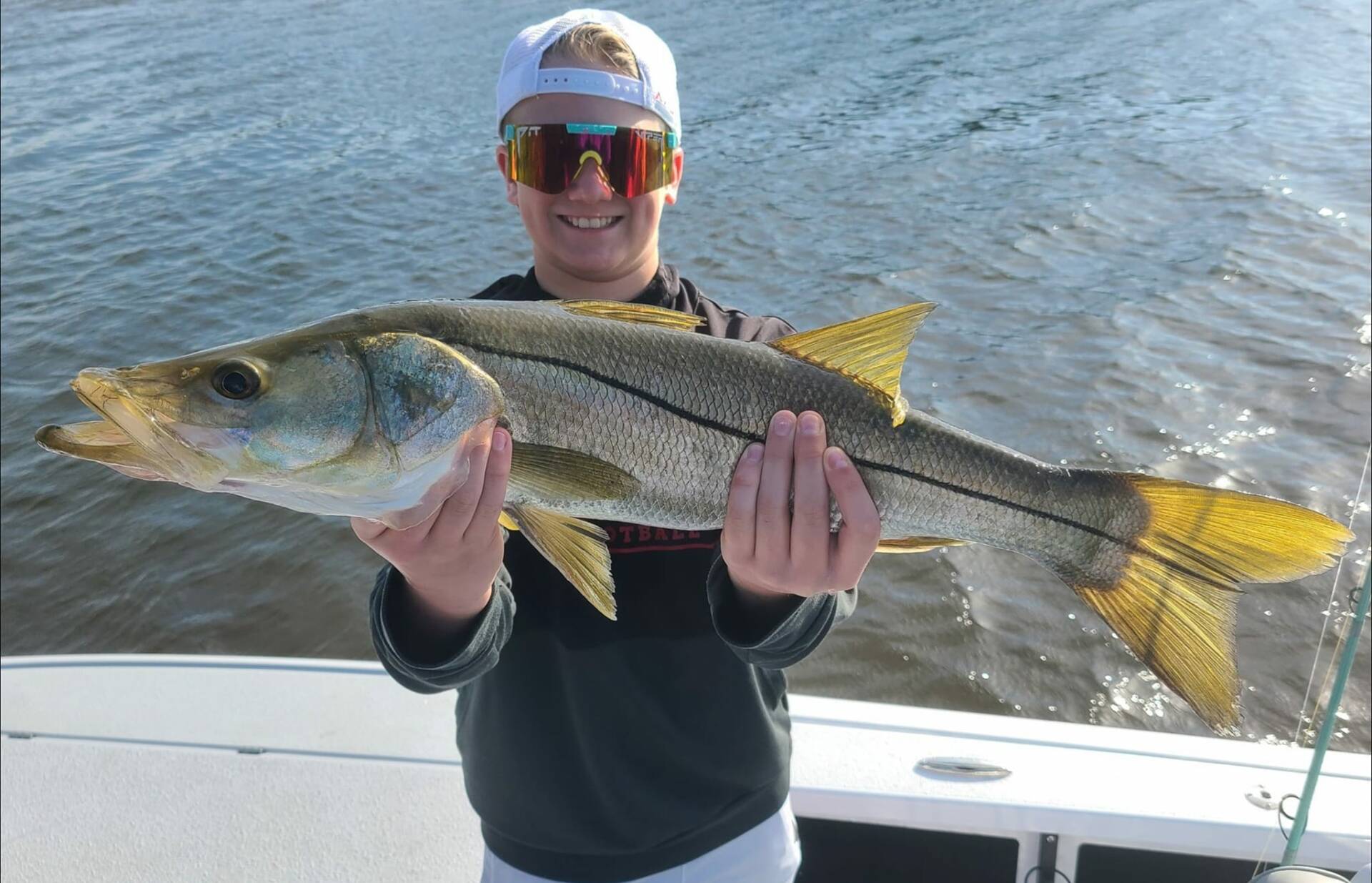
But say you’re targeting something like trout over the grass flats or in deeper channels—then you might want a popping cork. This setup not only keeps your bait at the right depth but also makes a sound that mimics feeding fish, which can draw trout from a distance.
Then you’ve got lure fishing. That’s where you can really get technical, trying to outsmart those fish with something fake. With lures it’s all action—making that lure dance just right to tempt a trout or a snook. Here around Tampa Bay, where the waters are full of some of the smarter sport fishing species, you’ve got to be on your game to fool them.
Pro Tip: Lure fishing requires you to think like a fish. You’re mimicking the prey, so every twitch of your rod tip, every speed adjustment, and the way you reel in can make a big difference.
When you’re targeting trout or snook with lures, you’ll want to vary your retrieval speeds and include occasional pauses. Something like a jerk bait or a topwater plug works wonders early in the morning when the water’s calm. Cast near the mangroves edges, around old docks, or over the top of submerged grass beds. The key is to make that lure skip or dance across the surface, imitating a wounded fish.
If you’re around the clearer waters by the Gandy Bridge or targeting deeper spots, you might switch to a soft plastic jig or a paddle tail rigged on a jig head. These you’ll want to bounce along the bottom or through the water column, making them flutter or swim like a real fish. It’s all about the presentation—slow and steady with occasional twitches can trigger strikes from more cautious fish.

Each area around Tampa has its quirks. For example, over by the Skyway Fishing Pier, you might find success bouncing a grub along the pilings for snook, or using a spoon to mimic the flashy run of a baitfish when the mackerel are running.
And here’s a local tip: If you’re over by Fort De Soto, don’t overlook the old submerged structures where snapper and grouper might hang out. Dropping a vertical jig can lead to some unexpected surprises…
Tampa Fishing Adventures
Ready to hit the waters? Captain Bucky of Bag’em Fishing Charters knows these waters like the back of his hand—from the inshore waters to the back bays. Whether you’re here to try for your first redfish or you’re looking to reel in a monster tarpon, we gear up based on what you’re aiming for.
So, if you’re looking to cash in on some of the best fishing in Florida this summer, give us a call at (407) 977-7650—or click here to book your fishing trip online!

